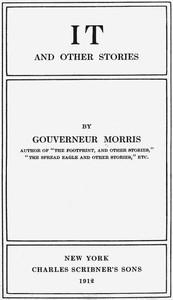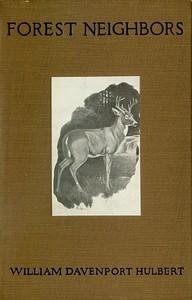Read this ebook for free! No credit card needed, absolutely nothing to pay.
Words: 90561 in 24 pages
This is an ebook sharing website. You can read the uploaded ebooks for free here. No credit cards needed, nothing to pay. If you want to own a digital copy of the ebook, or want to read offline with your favorite ebook-reader, then you can choose to buy and download the ebook.


: The New Nation by Paxson Frederic L Frederic Logan Dodd William Edward Editor - United States History 1865-1921
government, and gave their full devotion to both.
The four years of the Civil War carried the United States over a period of social and economic transition and left it well started on the new course. They enlarged and expanded the activities of government, hastening that day when there should exist a public conviction that government is a matter of technical expertness and must be run in a scientific manner for the common good. They raised the problems of taxation and currency to a new importance, and impressed their significance upon the men who directed the industries of the country. In their prosperity they made it possible to save the Union; and at their close a Union party, uncertain of its strength and its personnel, faced the problems of a united country which included an industrial North, a desolated South, and a vanishing frontier.
BIBLIOGRAPHICAL NOTE
THE WEST AND THE GREENBACKS
The last frontier, that developed after 1857, was novel as well as new. It was made up of mining camps. Everywhere in the Rocky Mountains prospectors staked out claims and introduced their free-and-easy life. Before 1857 the group of Mormons around the Great Salt Lake was the only considerable settlement between eastern Kansas and California. Now came in quick succession the rush to Pike's Peak and Colorado Territory , the rush from California to the Carson Valley and Nevada Territory , and the creation of the agricultural territory of Dakota for the up-river Missouri country, where in a few more years were revealed the riches of the Black Hills. In 1863 the mines of the lower Colorado River gave excuse for Arizona Territory. Those of the northern Continental Divide were grouped in Idaho in the same year, and divided in 1864 when Montana was created. Wyoming, the last of the subdivisions, was the product of mines and railroads in 1868. Oklahoma was not named for twenty years more, but had existed in its final shape since the passage of the Kansas-Nebraska Bill in 1854.
The legitimate influence of these mining-camps upon the United States was great. It was no new thing for Congress to solve its national problems on the initiative of the West. Since the passage of the Ordinance of 1787 this had been a frequent occurrence, and the history of the public lands had always been directed by Western demands. In 1862 the agricultural West, whose capacity to cultivate land had been magnified by the new reaper of McCormick, had obtained its Homestead Act, by which land titles were conveyed to the farmer who cleared the land and used it. Thomas H. Benton had fought for this through a long lifetime. He died too soon to see the full apotheosis of the squatter, who gradually developed, in point of law, from the criminal stealing the public land to the public-spirited pioneer in whose interest a wise Congress ought to shape its laws. Under the influence of this new Homestead Law, aided by the Pre?mption Law, which remained in force, land titles were established in the Mountain States as rapidly as the Indians could be removed.
The frontier mining territories were loud in demanding that Congress should give them more land, remove the Indians, extend police protection, and give them mails and railroads. The miner disliked the isolation which his speculations brought upon him, and Congress unfolded new powers to remove it for him. In 1858 it organized the great overland mail that ran coaches to California in less than twenty-five days. The pony express provided faster service in 1860-61. And after private money had built the telegraph line to the Pacific, both Congress and the West took up the subject of a continental railway.
In the summer of 1862 a group of railroad companies was authorized to build a track from the Missouri River to California. As modified by law in 1864 the contract provided for extensive government aid in the speculation: twenty sections of land for every mile of track, and a loan of United States bonds at the rate of at least ,000 per mile. But the West had little capital, and the prosperous East had better investments at home, so that money could hardly be got into this scheme on any terms. The Western promoters were driven to shifty extremes before they overcame the Eastern belief that no continental railroad could pay. Not until 1866 was the construction work begun in earnest.
Between 1866 and 1869 the building of the Union Pacific was the most picturesque enterprise in America. Across the great plains, the desert, and the mountains, from Council Bluffs to Sacramento, it was pushed. In the West, Stanford and his group of California visionaries carried the burden. The eastern end brought out no single great promoter. Both ends fought the problem of timber and stone and railroad iron, but most of all of labor. Stanford finally imported the Chinese coolie for the job. Civil War veterans and new immigrants did most of the work on the eastern end. And along the eastern stretches the Indian tribes of the plains watched the work with jealous eyes. The Pawnee, the Sioux, the Arapaho, and the Cheyenne saw in the new road the end of a tribal life based upon wild game.
Severe Indian outbreaks accompanied the construction of the railroad, as the tribes made their last stand in Wyoming, Colorado, and the Indian Territory. Before the line was done, the tribes of the plains were under control in two great concentration camps, in South Dakota and Indian Territory, and the worst of the Indian fighting in the West was over.
In the spring of 1869 the railroad was finished and a spectacular celebration was held near Ogden, in Utah Territory. The finishing stroke was everywhere regarded as national, since not only had Congress given aid, but the union of the oceans was an object of national ambition. With the completion, the problem shifted from the exciting risks of construction and finance to the prosaic duties of paying the bills, and with the shift came a natural falling-off in enthusiasm.
The Union Pacific was the longest railroad of the sixties, and aroused the greatest interest. In an economic way it is merely typical of the speculative expansion of the North that began early in the Civil War and continued increasingly thereafter. The United States was engaged in a period of hopeful growth such as has followed every panic. After a few years of depression, stagnation, and enforced economy, business had revived about 1861. Confidence had increased, loans had been made more freely, and capital had taken up again its search for profitable investment. In the newer regions, where permanent improvements were least numerous, the field for exploitation had been great. The climax of exploitation was reached throughout the West.
Free books android app tbrJar TBR JAR Read Free books online gutenberg
More posts by @FreeBooks


: Forest Neighbors: Life Stories of Wild Animals by Hulbert William Davenport - Animals Anecdotes Animals-Wild






